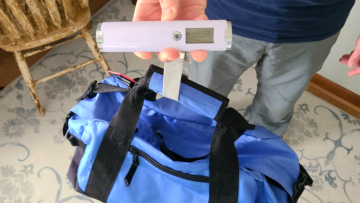This post contains credit card referral links.
We may earn points or miles based on clicks and sign-ups.
Thank you for helping us travel the world.
In Part 1 of this post series, we talked about things to do if you find yourself a victim of theft while traveling abroad. In Parts 2 and 3 we want to give a few specific examples of things we do to prep before heading out to minimize headaches when things go wrong.
As we’ve discussed in prior posts, we’re big fans of (the responsible use of) travel credit cards. They come with perks and help us earn points/miles that help us get back out into the world faster and in more comfort than we otherwise might. That usually means that we typically have several of those cards with us on our travels. Sound familiar?

On one of our domestic trips, we found ourselves in a situation where Tasha’s purse went off in search of better company during loadout at a boutique show (long story, don’t ask). As it turned out, all her credit cards, debit cards, cash, and the like went along for the ride (plus her truck and house keys – which we were way more worried about, stranger danger!). As we started going through each bank’s app to lock each of the missing cards, we quickly came to realize that, because we were both traveling with the same credit cards, in locking Tasha’s cards, we were also locking Jason’s cards. That was a problem, as we were about to get on the road to head home (luckily I had my keys too)…in a truck that needed gas…on a Sunday night. Neat, right?
Since that…we’ll call it a learning experience, we never travel with the same credit cards. For example, Jason has a Chase Sapphire Preferred card which is our primary card. Tasha is an authorized user on that account and has a card that accesses that same account. But, Tasha also has her own Chase Sapphire Preferred card and Jason is an authorized user on that account. This sounds more confusing than it is but suffice it to say that prior to this experience, we both usually carried two different Chase Sapphire Preferred cards on us (Jason had his and his authorized user card for Tasha’s account and vice versa). The trouble with this is if Jason is carrying both cards and loses his wallet, we must put a freeze on both of those Sapphire cards and accounts. That means Tasha’s cards are now equally useless.
So, continuing the above example, Jason leaves his authorized user card for Tasha’s account at home and only takes his Sapphire Preferred card. Tasha does the same with hers. This means if Jason loses his wallet and must freeze his card, Tasha can still use her card because it’s an entirely different account. We do this with all our cards so there are zero overlaps between the cards we take as we are authorized users on each others cards. This gives us a little peace of mind that, even if something goes wrong and we lose some of our cards, once we freeze those cards we can continue our adventure as originally planned, and hopefully those lost cards will have new ones waiting for us when we get home.
In case you’re wondering, this particular story has a happy ending. Someone picked up her purse and put it in the mail the next day. Second lesson, always carry your business cards with your phone number so if your things are found you can be easily contacted. Biggest sigh of relief ever!

No one wants to be a victim of theft (or mishandling), either at home or abroad. It’s even worse to be abroad when that happens and not be able to do anything because you no longer have access to your money. Moral of the story: don’t always expect the worst to happen on your travels (because usually it won’t) but do plan for it just in case. You’ll be glad you did.




